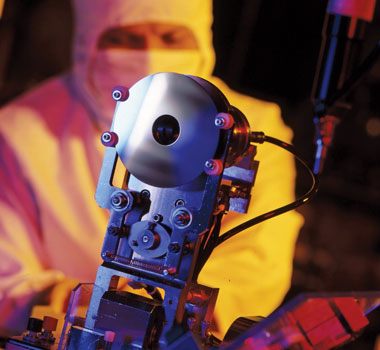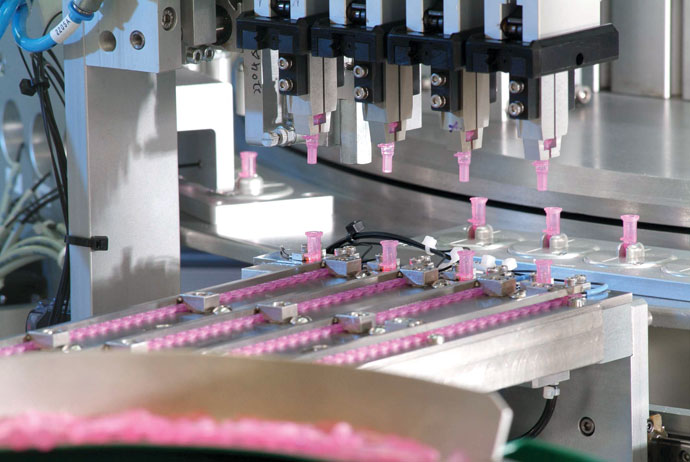For more than four decades, the electrical and electronics (E&E) industry has been central to Malaysia’s economic development, and it’s even more important in 2014. The sector is one of 12 National Key Economic Areas (NKEA) charged in the government’s Economic Transformation Programme with helping Malaysia become a knowledge-based, high-income economy by 2020. Capital investors in NKEAs find a highly receptive business climate in the heart of the ASEAN region and enjoy a quick and efficient process of becoming operational.
But can investors find the talent they require as NKEAs such as E&E become more specialized? Semiconductor plants largely defined the sector in the 1970s and 1980s. Today, E&E in Malaysia means silicon and solar module production, LED front-end operations, nanotechnology, integrated circuit design, testing & measurement, embedded systems and other specialties.
April 2012 analysis from Ipsos Business Consulting points to a gap in talent supply-demand projections due to competition from other sectors and countries for the same talent pool, and a skills gap “where adequately trained and skilled talent, both at entry and experienced levels are lacking. These are mainly in the area of high value-added activities, such as in R&D and high-end processing activities,” according to the Ipsos analysis.
That’s where such agencies as the Malaysian Investment Development Authority (MIDA) come in – to facilitate initiatives designed to prime the labor pool and cultivate the skills sets required by the E&E sector and the 11 other NKEAs.
“As Malaysia is moving towards becoming a high-income nation, the share of E&E investments in high-value-added activities and knowledge industries will rise while investments in lower-valued activities in assembly and manufacturing will slowly decline,” says Dato’ Azman Mahmud, MIDA CEO. “The shift of economy climate in the E&E industry had led to a call for a larger pool of top talent and a highly skilled workforce, which requires a different workforce profile.”
Malaysia’s talent pool is mainly supplied by local institutions and an inflow of talent from outside the country – returning Malaysians and foreign expatriates, says Azman. But Malaysia must still compete for high-end talent as must every global economy committed to being knowledge-based. “As the central investment promotion agency and the main implementing body for the New Economic Model (NEM), MIDA is intensifying its role in addressing one of the challenges in attracting quality investments i.e. serving the human capital needs of investors. We have established a specific Division on 1 January 2013 namely the Industry Talent Management Division to provide services to investors/companies to meet investors’ human capital needs. MIDA is working closely with relevant industries and institutions such as TalentCorp., the American Malaysian Chamber of Commerce and CREST [Collaborative Research in Engineering, Science and Technology] in closing the gaps in the supply and demand of talent.”
”
We have been fortunate to recruit
experienced and talented engineers
from the Penang area to join our R&D organization.“
– Ruben Nyul, Managing Director, Bose Systems Malaysia
“MIDA has also established a Focal Point Network to meet investors’ demand for greater visibility into Malaysia’s supply of talent,” Azman elaborates. “Among the determining factors that investors look at are the skills and technical competencies of the local workforce. Technical and Vocational Education Training (TVET) programs were introduced in schools and training centers as part of government and private agency initiatives to create a large pool of skilled workers.”
In addition, he adds, “MIDA collaborates and forms smart partnerships with relevant stakeholders and leverages on existing talent development programs to assist companies in churning out an industry-ready stream of talent for identified Engineering, Science and Technology and ICT sectors.”
E&E Companies Weigh In
Since June 2013, Bose Systems Malaysia has conducted its research, development and manufacturing of products for its home entertainment, noise reduction technology and automotive systems divisions at the Batu Kawan Industrial Park in Penang. Talent availability was one of the key location factors.

“In the manufacturing areas, we were able to find a very highly trained and motivated talent pool, and we have been fortunate to recruit experienced and talented engineers from the Penang area to join our R&D organization,” says Ruben Nyul, Managing Director.
“We have added strong talent in mechanical, electrical, software and manufacturing engineering as well as program and people management. Where we have faced some challenge is on recruiting talent in specific and unique areas of specialization for Bose that differ from the local industry, such as acoustic engineering,” says Cris Cataudella, Director of Research and Development.
Can Malaysia supply the talent Bose will require in the future? It can, say both Nyul and Cataudella.
“We are optimistic about acquiring E&E talent in the future,” they explain.
“We are already collaborating with the local university on a long-term strategy to grow and develop talent in this area. We hope to be the employer of choice, where these talents would want to come and work with us in the future.”
Aemulus Corp., a designer and developer of semiconductor testers, is 10 years old this year. It started with six engineers in 2004 and now employs 70 with 30 more hires planned by 2016. Hiring in the early days was challenging, because signing on with a start-up was considered risky compared to joining an established multinational, says Ng Sang Beng, Managing Director.
“Today, Aemulus has a certain level of popularity among the E&E engineering field, especially in Penang,” he relates. “Hiring good engineers is no longer as difficult as it was.” But for that to remain the case, an even greater focus on higher education will be required, says Ng.
“Malaysia has to be more aggressive in education. This is a known fact, and everyone is trying to help. The education system needs to be adjusted to match demand and trends.” The E&E industry in Malaysia is mature, and that helps keep the supply of engineers ample. “We need a consistent, competitive and business-oriented curriculum, philosophy and direction so that [courses] meet industry demand.”
In the meantime, Ng says he wouldn’t be anywhere else, because Malaysia helps Aemulus be competitive and successful.
“The E&E ecosystem is complete and encouraging, and the government is business-oriented, especially MIDA and its incentives for local and foreign industries to focus more on R&D, which is the core of future revenues. Very few countries can match what Malaysia is doing.”
This Investment Profile was prepared under the auspices of the Malaysian Investment Development Authority. For more information, visit
www.mida.gov.my
.
